Key words: Autoimmune thyroiditis, Post Covid Syndrome, Homeopathy,
Abstract:
It is a known fact that homeopathy effectively treats autoimmune conditions and its relevance increased manifold after the Covid surge as it attacks the immune system principally. But we homeopaths treat based on the simillimum and if we know all ramifications of a disease processes it may serve us better in management of cases and giving optimal benefit to our patients.
Background: Thyroid dysfunction is one of the leading endocrine disorders constituting 30% to 40% of an endocrine practice. About 50% of the population with thyroid dysfunction remains undiagnosed.
Autoimmune thyroiditis is commonest in hypothyroidism in iodine abundant populations. Chronic lymphocytic thyroiditis or Hashimoto thyroiditis is frequently seen with a female-to-male incidence ratio of 10:1.
Autoimmune thyroid disease (AITD) includes hyperthyroid Graves’ disease, hypothyroid autoimmune thyroiditis, and subtle subclinical thyroid dysfunctions.
Introduction:
Thyroid dysfunctions may present clinically as below:
- Paraesthesia and arthralgia and Muscle cramps
- Headache – In children
- Impaired memory and cognition, poor concentration
- Increased heart rate, blood pressure, and high body temperature, tachycardia.
- Sore throat
- Sneezing-sternutation
- Allergies\anaphylaxis
- CRP increased
- Prolactin increase/CK increased
- Emotional lability-anxiety and palpitations
- Frequent gastric upsets
- Anaemia
Main takeaway points: While compiling this presentation the author realised many cases were related to thyroid and not local symptoms to be treated and many times general physicians miss this, as we homeopaths do as lab values tend to be marginally altered. Let us explore autoimmunity related thyroid problems, taking forward from the above mentioned leads and arrive at a simillimum.
Aetiology
- Genetic susceptibility that predisposes to disease
- Family history of autoantibodies against thyroglobulin and thyroid peroxidase TPOAB in patients with AITD. ()
- Host’s immune system dysregulation (PsychoNeuroImmune system)(4)
- Bacterial, viral or fungal infections
- Parasitic infestations,
- Physical and environmental agents,
- Hormonal factors
- Low vitamin D and selenium levels.
- Other autoimmune diseases
- Thyroxine absorption issues.
Interplay of all of the above factors may create “The Mosaic of Autoimmunity”. (1,2)
Process:
In autoimmune hypothyroidism, the thyroid is initially enlarged due to the presence of a marked lymphocytic infiltrate; this phase is followed by fibrosis, atrophy of the gland, and failure to synthesize normal levels of thyroid hormones.
Hashimoto thyroiditis is due to the presence of circulating autoantibodies to thyroid antigens, resulting in a chronic autoimmune destructive process involving the formation of immune complexes, cytotoxic T cells and an intra thyroidal pro inflammatory state created by local cytokine release.
In Graves’ disease, thyroid over activity is caused by autoantibodies which stimulate the TSH receptor proportional to the severity of AITD. A recent meta-analysis showed that patients with GD were more likely to have vitamin D deficiency. # For the clinician it is noteworthy.
The Autoimmune Polyglandular Syndromes (APS) are a group of diseases characterized by the presence of a combination of multiple autoimmune disorders along with AITD.
APS-1 also called autoimmune polyendocrinopathy candidiasis ectodermal dystrophy (APECED) is a rare monogenic disease caused by mutations in the autoimmune regulator gene characterized by triad of hypoparathyroidism, Addison disease, and chronic mucocutaneous candidiasis.
Polyglandular Autoimmune Syndrome type 2 or APS-2 is the most common APS, a combination of Addison’s disease with either AITD (Hashimoto’s Thyroiditis or Grave’s disease) or type 1 diabetes mellitus and its inheritance is complex (Michels & Gottlieb, 2010). Hashimoto thyroiditis is also related to several other autoimmune diseases such as pernicious anaemia, adrenal insufficiency, and celiac disease.
# This is important for clinicians as symptomatic relief may not have achieved significant control or reversal of underlying problems and each system issue treated categorically may fail. Many times, we treat only thyroid related problems but do not know its multiple autoimmune disorder, and symptoms are not coming up due to reaction to our treatment but because of pathological processes.
Reversible causes of Hypothyroidism
- Hashimoto’s thyroiditis (about 5%)—decreasing thyroid stimulating hormone receptor blocking antibodies
- Postpartum thyroiditis—up to 70% become euthyroid in the first year
- Subacute thyroiditis—nearly 100% become euthyroid
- Iodine induced—most become normal when iodine is withdrawn
- Drug induced—most recover when drugs are withdrawn
- Post‐ablative (surgery/RAI therapy)—transient hypothyroidism occurs
- A systematic review found the positive evidence that Selenium supplementation is associated with a significant decrease in TPOAb titers in improving the mood or well-being.
# This is very important as we clinicians can avoid unnecessary treatment courses.
Pregnancy and thyroid dysfunction
The hypothalamic-pituitary-thyroid axis (HPT axis) is essential and changes of thyroid hormone homeostasis (THH) affects growth, metabolism and cognitive function of the foetus. In utero, appropriate thyroid hormone concentrations are vital for normal nervous system development.
Hyperthyroidism during pregnancy. GD and gestational transient thyrotoxicosis (GTT) associated with hyperemesis gravidarum are the commonest. Those women who are found to be TPOAb positive prenatally, need postpartum assessment of thyroid function and is recommended at 3, 6, and 12 months.
Thyrotoxicosis in pregnancy with adverse maternal outcomes like
- placental abruption, preterm delivery, heart failure, thyroid storm
- foetal (low birth weight, growth retardation, neonatal hyperthyroidism, stillbirth, and foetal death,
Hypothyroidism
- evidence that maternal and foetal wellbeing are compromised by hypertyrosinaemia.
The “normalisation” of thyroid stimulating hormone (TSH) activity target recommends 0.5–2.5 mU/l
#Again, this is very essential information for homeopaths by which we can help patients maintain stipulated TSH levels during pregnancy with all necessary interventions for optimal health of mother and the baby.
Postpartum thyroid dysfunction (PPTD) is the most common thyroid-directed autoimmunity that is Hashimoto disease or postpartum exacerbation of Graves’ disease. The incidence of postpartum thyroiditis is about in 10% of women. And in more than 30% with positive TPOAb and type 1 diabetes mellitus they may end up in thyroid dysfunctions are permanently hypothyroid within the first year.
Subclinical thyroid disease which is largely asymptomatic but has adverse outcomes for vascular and bone diseases.
Pathobiology of transient autoimmunity
This painless inflammation of the thyroid gland can cause transient thyrotoxicosis followed by transient or persistent hypothyroidism. Each of these phases of thyroid dysfunction typically lasts 2 to 8 weeks. This condition is believed to reflect transient autoimmunity.
Subacute thyroiditis
Subacute thyroiditis is self-limiting acute inflammatory disease of the thyroid probably by a virus. Which occasionally recurs will cause permanent hypothyroidism as follicular destruction is extensive.
There is fever and thyroid tenderness also spread to other parts of your neck, ears, or jaw.. d\d pharyngitis dental pain. The thyroid is asymmetrically enlarged, firm, and tender. History of an antecedent viral upper respiratory infection and it has more lassitude and prostration than in other thyroid disorders.
Initial hyperthyroidism by hormone release from the disrupted follicles sometimes followed by a transient hypothyroidism.
Other symptoms of subacute thyroiditis include:
fever
fatigue
weakness
hoarseness
difficulty swallowing
# We need to think of subacute thyroiditis in Post Covid illness with the above symptoms. Most people typically develop hyperthyroidism, usually lasting for less than three months.
Post Covid/ vaccination expresses with very high fevers of 104°f, think of thyroid storm. It’s a rare condition but now on the rise post Covid/vaccination. Thyroid storm is a life-threatening health condition untreated or undertreated hyperthyroidism with an intercurrent trigger such as infection.
During thyroid storm, an individual suffers from hyperthyroidism characterized by a high fever (temperatures often above 40 °C/104 °F), tachycardia, hypertension, vomiting, diarrhoea, and agitation and sudden weight loss with atered cognition.
Hypertension with a wide pulse pressure occurs in early to mid-crisis, with hypotension accompanying shock occurring in the late stage.
# One case of pain in jaws remained undiagnosed for one year and was treated for a dental cyst without relief. She was advised surgery to remove cysts which she was reluctant to do, so consulted a homeopath. She had weight loss after high fever of 3 days as well as changes in TSH values when checked.
Also, further tests considering thyroiditis showed TPOAb was high and then she was treated for thyroiditis and her symptoms were cured based upon simillimum. So, consideration of thyroiditis in cases of jaw, neck or dental pain remains crucial in these times of post Covid. For full case details please mail to the author.
Hypothyroidism symptoms
As the disease progresses, hypothyroidism generally switches to hyperthyroidism in the second stage. The symptoms during the second stage may last for nine to 15 months.
Types of subacute thyroiditis
Subacute granulomatous thyroiditis: This is the most common caused by viral infections.
Postpartum thyroiditis:
Subacute lymphocytic thyroiditis: This also occurs during the post-partum period. Hyperthyroid symptoms develop within three months and hypothyroid symptoms can last for several months after.
Palpation thyroiditis: Thyroid follicles are damaged from mechanical manipulation such as repeated examination of the thyroid gland or surgery.
SARS-CoV-2 and thyroid
The thyroid gland and the virus infection with inflammatory-immune responses are in complex interplay. SARS-CoV-2 uses ACE2 combined with the transmembrane protease serine 2 (TMPRSS2) as the key molecular complex to infect the host cells. ACE2 and TMPRSS2 expression levels are high in the thyroid gland and more than in the lungs.
There is greater evidence that the thyroid gland and the entire hypothalamic–pituitary–thyroid (HPT) axis could be relevant targets of damage by SARS-CoV-2. Specifically, COVID-19-related thyroid disorders include thyrotoxicosis, hypothyroidism, as well as non-thyroidal illness syndrome.
Allergic rhinitis and autoimmune thyroid disease
Both allergic rhinitis (hay fever) and autoimmune thyroid disease (AITD) result from similar immune system responses. People with Graves’ disease are 42.9% more likely to have chronic or recurrent allergic rhinitis. (6)
Autoimmune thyroid diseases are the most common. Hashimoto thyroiditis (HT) is considered to be a T-helper (Th) type 1 dominant condition, Graves disease is considered a Th2-dominant condition.
The American Journal of Rhinology and Allergy reported that over 16% of 2,000 people with allergic rhinitis had Hashimoto’s thyroiditis. This is significant because the incidence of Hashimoto’s thyroiditis in the general population is only around 1.5%.
So, clinicians suspect thyroid dysfunction in severe and chronic allergic rhinitis.
# This is important for clinicians as we tend to treat bouts of sneezing more as allergy than autoimmunity. It can give leads for framing our questions in unravelling subtleties.
Hashimoto disease is associated with a variety of different non thyroidal autoimmune diseases (NSAIDs), and diagnosis in adulthood made these even more prevalent.
Diagnosis
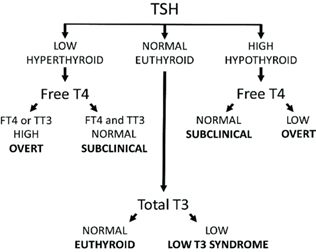
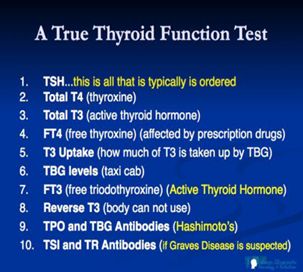
Psychoneuroimmunology (PNI) and neuroendocrinology
The field of psychoneuroimmunology says that the immune system is NOT an autonomous, but is a self-regulating system.
The CNS and the immune system interact with complex immune signalling and feedback loops for the protection and homeostasis of the whole organism therefore affected by psychological and physical stressors. The mind and body share bidirectional influences through chemical messengers.
Shortest “chronic” stressors, such as academic examinations, were associated with decreases in cytotoxic lymphocytes but antibody-producing functions were generally unchanged. But chronic stressors, such as having a spouse with dementia, decreased both cytotoxic and antibody-producing functions of immune cells.
REMEDIES FREQUENTLY HELPING IN THYROID DISORDERS
- Calc Carb, Calc Flour, Calc Phos, Calc Iod, Calc Ars, Calc ova testa, Calc ars and Mur as well as Calc Causticum.
- Iodum, Bromium and chorines its compounds of calcarea, Baryta, Ferrum, Arsenicums, Ammoniums
- Thuja, Nat Mur, Lycopodium, Pulsatilla, Silicea, Causticum, Arsenic Album, Hepar sulph, Sulph Iod, Graphites Natrum silicata, Nat Ars Natrum Salisylatum, Ammonium group especially Ammonium Brom
- Sarcodes: Thyroidinum, Ovaries, Pitutarinum, Parathyroidinum, Insulin, Hypothalamus
- Rare yet important: Ailunthus, Lycopus , Phytolacca, Fucus Vesiculosa, Oophorinum, Lac Humanum Amylenum Nitrosum.
Case Example:
Mrs S, A 25 years
Date 16/9/20
Gestation- 36week her LMP-16\3\2020 EDD-13\1\21. She was diagnosed with Thyroid disorder and-treated before marriage then stopped it . It increased after corona infection 20\4\2020 TSH was 126,T3-14.56(70-200)T4-0.98(4.5-12.5)
She started treatment and her TSH was 8.15. 12\6\2020 ; T3-1.05,T4-8.13,
Vomiting for a whole day, countless times, if eating or on drinking water. She had a similar complaint even during first pregnancy till delivery. Her abdomen was painful, had epigastric pain and same point in back as well. She was diagnosed Hyperemesis.
She complained of painful foetal movements since 3 days . I gave Calc carb 6c, followed by Bellis per 30 for back pain.
1st baby is now 1.5 yrs. old, but soon after that child after she got aborted spontaneously twice.
G4 L2P2A2 Jan 2020 and again spontaneous abortion in March 2020 after positive pregnancy test.
On 10\9\20 Fever for a day with malaise , suspected COVID by her Gynaecologist but she said take rest no medicine needed. She got better with Rhus tox 30 od/2 days.
On 1\10\20 she had complained of headache <3 pm > activity Lycopodium 6c relieved her soon.
I gave biochemic tissue salts of Schuessler ; Kali phos 6X,Mag phos 6X, Ferrum phos 6X, Calcarea Phos 6X, Natrum Phos 6X, Nat mur 6X, Nat sulph 6X, Kali Mur 6X , surplus as she went to native. She took needed medicine based on symptoms according to my advice over phone.
She delivered a male baby on 13\1\2021 and all her other parameters within normal limits as well as Covid RT-PCR negative. Tested for TSH on 15\1\2021 was 2.520 IU\ml.
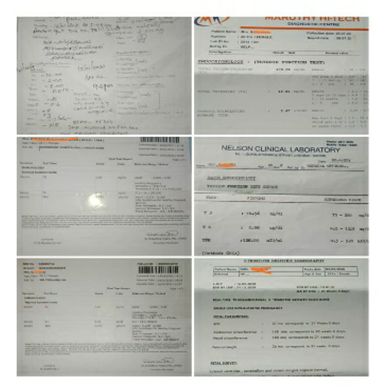
Role of homoeopathy: Patient had tendency for miscarriage and her Hyperemesis indicates probable underlying hyperthyroid state. Yet her symptoms got relieved with homeopathy, and when whole world was grappling with COVID and she managed with mild illness and uneventful course of pregnancy.
At term doctors were reluctant to see in her village corporation hospital and had asked them to be prepared for any untoward events during delivery. But, test reports on 1]1\21 helped for some confidence. It turned out uneventful and she’s doing well.
Conclusion: Auto immune disorders are on the rise including thyroiditis Post-Covid and vaccination also has impact on one’s health. Early identification especially conditions like Sub-acute thyroiditis, Thyroid storm and treating effectively with homeopathic medicines is essential with ancillary measures if necessary, so that many major hormonal turmoil could be balanced in the beginning. So, challenges for homeopaths have been ever increasing and we need to armour ourselves with knowledge, and I hope this compilation moves a step in that direction.
Hail Homoeopathy
References and Acknowledgements:
- Yoo, W. S., & Chung, H. K. (2016). Recent Advances in Autoimmune Thyroid Diseases. Endocrinology and metabolism (Seoul, Korea), 31(3), 379–385. https://doi.org/10.3803/EnM.2016.31.3.379
- Lee, H. J., Li, C. W., Hammerstad, S. S., Stefan, M., & Tomer, Y. (2015). Immunogenetics of autoimmune thyroid diseases: A comprehensive review. Journal of autoimmunity, 64, 82–90. https://doi.org/10.1016/j.jaut.2015.07.009
- Inge Bülow Pedersen, Peter Laurberg, Chapter 60 – Antibodies to Thyroid Peroxidase and Thyroglobulin in Iodine Deficiencies, Editor(s): Victor R. Preedy, Gerard N. Burrow, Ronald Watson, Comprehensive Handbook of Iodine,
- PsychoneuroimmunologyFrom:Developmental-Behavioral Pediatrics (Fourth Edition)2009 URL:https://www.sciencedirect.com/science/article/pii/B0122272102002922
- Autoimmune Thyroid Disease Anthony P. Weetman, in Endocrinology (Sixth Edition), 2010
- Autoimmune Thyroiditis, Autoimmune thyroiditis (AITD) is one of the most common autoimmune disorders. From: Comprehensive Handbook of Iodine, 2009
- Degirmenci PB, Kirmaz C, Oz D, et al. Allergic Rhinitis and its Relationship with Autoimmune Thyroid Diseases. American Journal of Rhinology & Allergy. 2015;29(4):257-261. https://doi.org/10.2500/ajra.2015.29.4189
- Subacute Thyroiditis Medically reviewed by Elaine K. Luo, M.D. — Written by Gretchen Holm —Updated on September 17, 2018.
- Maurya, Harikesh. (2018). Thyroid Function Disorders among the Indian Population. Annals of Thyroid Research. 4. 10.26420/annalsthyroidres.2018.1044.



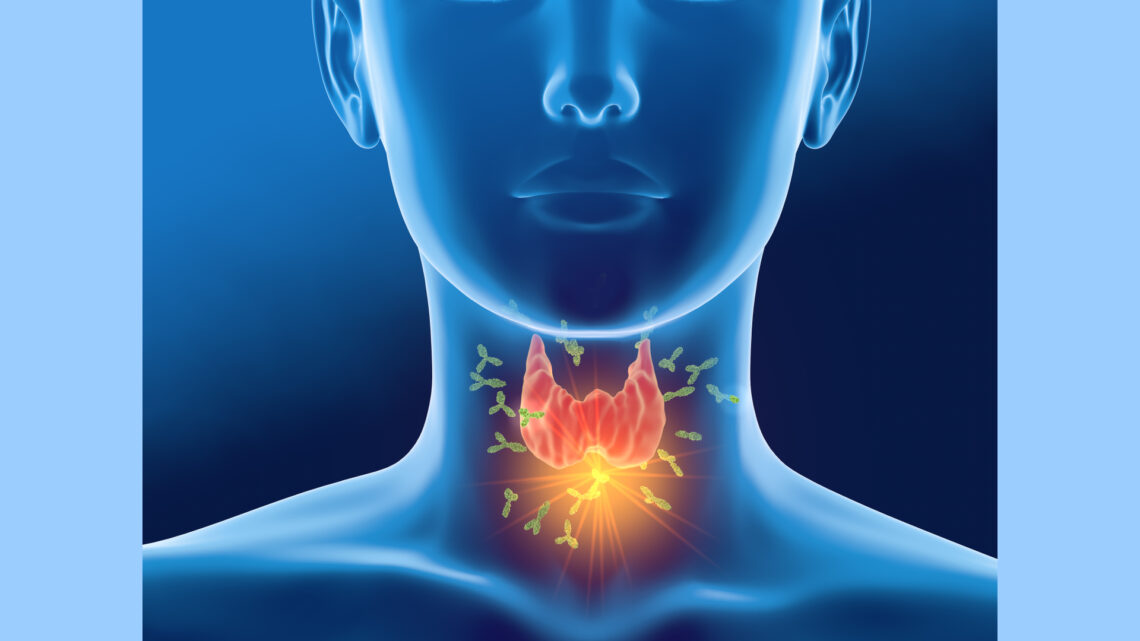
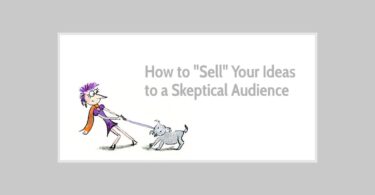
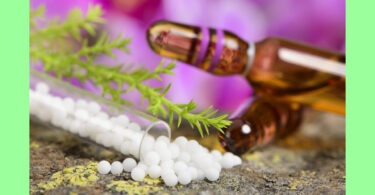

Lida Mattman, PhD was a researcher who found that there is no such thing as autoimmunity. The immune system isn’t stupid: it isn’t attacking its own body, it’s attacking tiny bacteria hidden in the tissues. These bacteria are Cell-Wall-Deficient (CWD). Normal antibiotics work by destroying the cell walls of bacteria so they don’t work when there’s no cell wall to attack. CWD bacteria take months to show up in a lab culture. Their cells are so tiny they’re more the size of virus cells. Dr. Mattman also found that when a disease is treated with antibiotics, not all the bacteria cells are killed. Many are simply turned into CWD bacteria which can also be passed from mother to baby for generations. That sure sounds to me like what Dr. Hahnemann found 200 years ago. The American Medical Association (AMA) always claimed that this pleomorphism didn’t exist but I think they have recently admitted that it does. When syphilis is treated with chemicals, whether it was mercury in Dr. H’s time, or antibiotics in current treatment, the result is the same: many of the bacteria simply pleomorph into CWD bacteria and then go on to infect the body in a slightly different way, often causing a similar illness. Again, this is what Dr. H found himself. The Marshall Protocol Knowledge Base has much more information on Dr. Mattman and pleomorphism. Other scientists whose research forms the basis of the “Marshall Protocol,” found that Vitamin D is often deficient in “autoimmune” cases but it’s because the CWD love it. They thrive on it which means the number of bacteria grows, often to a large enough volume to kill the person. People (and doctors) think that if someone is deficient in Vitamin D, they need to supplement with the synthetic form or get more sunshine on their skin. The problem is they’re confusing cause with effect. The low Vit D is caused by the bacteria, not the other way around: a low Vit D level doesn’t allow bacteria to proliferate. When someone supplements with Vit D, they’re just feeding the bacteria and making it very happy. The M.P. uses two lab tests to determine one’s Vit D level: the 25-d test which only measures the inactive form in the body and the 1,25-D test which measures the active form. Most American doctors only measure the inactive form which seems pretty useless to me. The M.P. is a very interesting protocol. There are also videos on Youtube about it. I used to be on the M.P. but then discovered homeopathy.
Linda, this was so interesting, thank you!
Thanks a lot for the update, I have used autoimmune as a entry point as its difficult to tell patients why despite seemingly exact remedy no cure seen in cases. I believe it is the same as latent psora which is difficult to communicate to our patients at this point of time. Rest is just classical homeopathy nothing more ,🙏 indeed one of my case of ear pain which will be relieved but in two days came back to square one was helped with thyroidinum as thyroiditis was suspected. This has been in 3 cases till now.
I would like to respectfully argue two points of your article that I believe are incorrect:
Lida Mattman, PhD was a research scientist who discovered there is no such thing as an “autoimmune” illness because the immune system isn’t stupid: it isn’t attacking its own body. In reality, it’s attacking the tiny Cell-Wall-Deficient (CWD) bacteria hidden in those tissues. There’s more information on Dr. Mattman at the Marshall Protocol Knowledge Base.
Secondly, scientists at the Marshall Protocol have learned that CWD bacteria thrive on Vitamin D. Naturally, someone with a CWD infection is going to be low on this vitamin because the bacteria eat it faster than we can shovel it in. Also “Vitamin D” isn’t actually even a vitamin but a precursor to a natural steroid. It was misidentified as a vitamin back in the 1920s.
When people are tested for their Vitamin D level, the only test they’re given is for their 25-D level. But that isn’t active Vitamin D. The test that shows one’s active Vitamin D is the 1,25-D test which doctors don’t use. Scientists at the Marshall Protocol know that if your 25-D is low and your 1,25-D is high, that’s the classic marker of a CWD infection. But what do doctors do? They see the INACTIVE level of Vitamin D is low so they prescribe Vitamin D supplements which, again, the CWD bacteria love. The more Vitamin D we take, the more the CWD bacteria grow and multiply until we die.
The Marshall Protocol (M.P.) is based on some very interesting science and there are also Youtube videos on it.
I’m not touting the M.P. I’ve found homeopathy works better. I’m just saying that I believe we need to stop believing there’s such a thing as “autoimmune” illness.
I also think it’s possible that CWD bacteria are the same thing as Dr. Hahnemann’s inherited miasms. After all, CWD bacteria are created when an illness such as syphilis is treated with antibiotics. The bacteria don’t really disappear: they change into the CWD form and go on to infect the body in different ways, often kind of related to the original illness. That sure sounds like a miasm to me.